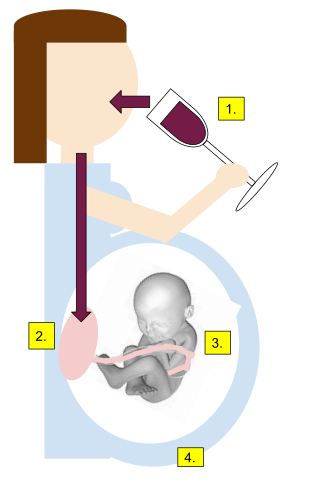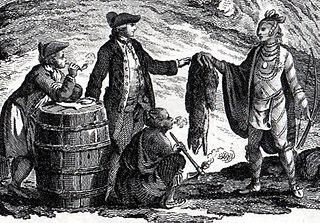
Alcoholism is the continued drinking of alcohol despite it causing problems. Some definitions require evidence of dependence and withdrawal. Problematic use of alcohol has been mentioned in the earliest historical records, the World Health Organization (WHO) estimated there were 283 million people with alcohol use disorders worldwide as of 2016. The term alcoholism was first coined in 1852, but alcoholism and alcoholic are stigmatizing and discourage seeking treatment, so clinical diagnostic terms such as alcohol use disorder or alcohol dependence are used instead.

Alcohol intoxication, also known in overdose as alcohol poisoning, commonly described as drunkenness or inebriation, is the behavior and physical effects caused by a recent consumption of alcohol. In addition to the toxicity of ethanol, the main psychoactive component of alcoholic beverages, other physiological symptoms may arise from the activity of acetaldehyde, a metabolite of alcohol. These effects may not arise until hours after ingestion and may contribute to the condition colloquially known as a hangover. The term intoxication is commonly used when large amount of alcohol is consumed along with physical symptoms and deleterious health effects.

Alcohol abuse encompasses a spectrum of alcohol-related substance abuse, ranging from the consumption of more than 2 drinks per day on average for men, or more than 1 drink per day on average for women, to binge drinking or alcohol use disorder.

Alcohol dependence is a previous psychiatric diagnosis in which an individual is physically or psychologically dependent upon alcohol.

Fetal alcohol spectrum disorders (FASDs) are a group of conditions that can occur in a person who is exposed to alcohol during gestation, as a result of their mother drinking alcohol during pregnancy. The several forms of the condition are: fetal alcohol syndrome (FAS), partial fetal alcohol syndrome (pFAS), alcohol-related neurodevelopmental disorder (ARND), and neurobehavioral disorder associated with prenatal alcohol exposure (ND-PAE). Other terms used are fetal alcohol effects (FAE), partial fetal alcohol effects (PFAE), alcohol-related birth defects (ARBD), and static encephalopathy, but these terms have fallen out of favor and are no longer considered part of the spectrum.
Dry drunk is an expression coined by the founder of Alcoholics Anonymous that describes an alcoholic who no longer drinks but otherwise maintains the same behavior patterns of an alcoholic.
Alcohol has a number of effects on health. Short-term effects of alcohol consumption include intoxication and dehydration. Long-term effects of alcohol include changes in the metabolism of the liver and brain, several types of cancer and alcohol use disorder. Alcohol intoxication affects the brain, causing slurred speech, clumsiness, and delayed reflexes. There is an increased risk of developing an alcohol use disorder for teenagers while their brain is still developing. Adolescents who drink have a higher probability of injury including death.
In English law, diminished responsibility is one of the partial defenses that reduce the offense from murder to manslaughter if successful. This allows the judge sentencing discretion, e.g. to impose a hospital order under section 37 of the Mental Health Act 1983 to ensure treatment rather than punishment in appropriate cases. Thus, when the actus reus of death is accompanied by an objective or constructive version of mens rea, the subjective evidence that the defendant did intend to kill or cause grievous bodily harm because of a mental incapacity will partially excuse his conduct. Under s.2(2) of the Homicide Act 1957 the burden of proof is on the defendant to the balance of probabilities. The M'Naghten Rules lack a volitional limb of "irresistible impulse"; diminished responsibility is the volitional mental condition defense in English criminal law.
Alcohol is any organic compound in which a hydroxyl functional group (-OH) is bound to a carbon atom, usually connected to other carbon or hydrogen atoms. An important class are the simple acyclic alcohols, the general formula for which is CnH2n+1OH. Of those, ethanol (C2H5OH) is the type of alcohol found in alcoholic beverages, and in common speech the word alcohol refers specifically to ethanol. Articles related to alcohol include:
Elvin Morton "Bunky" Jellinek, E. Morton Jellinek, or most often, E. M. Jellinek, was a biostatistician, physiologist, and an alcoholism researcher, fluent in nine languages and able to communicate in four others.
The modern disease theory of alcoholism states that problem drinking is sometimes caused by a disease of the brain, characterized by altered brain structure and function. Today, alcohol use disorder (AUD) is used as a more scientific and suitable approach to alcohol dependence and alcohol-related problems.

Delirium tremens is a rapid onset of confusion usually caused by withdrawal from alcohol. When it occurs, it is often three days into the withdrawal symptoms and lasts for two to three days. Physical effects may include shaking, shivering, irregular heart rate, and sweating. People may also hallucinate. Occasionally, a very high body temperature or seizures may result in death. Alcohol is one of the more dangerous drugs to withdraw from.

The Natural History of Alcoholism Revisited (1995) is a book by psychiatrist George E. Vaillant that describes two multi-decade studies of the lives of 600 American males, non-alcoholics at the outset, focusing on their lifelong drinking behaviours. By following the men from youth to old age it was possible to chart their drinking patterns and what factors may have contributed to alcoholism. Another study followed 100 severe alcoholics from a clinic eight years after their detoxification. The National Review hailed the first edition (1983) as "a genuine revolution in the field of alcoholism research" and said that "Vaillant has combined clinical experience with an unprecedented amount of empirical data to produce what may ultimately come to be viewed as the single most important contribution to the literature of alcoholism since the first edition of AA's Big Book." Some of the main conclusions of Vaillant's book are:

Alcoholism in family systems refers to the conditions in families that enable alcoholism and the effects of alcoholic behavior by one or more family members on the rest of the family. Mental health professionals are increasingly considering alcoholism and addiction as diseases that flourish in and are enabled by family systems.

Alcohol withdrawal syndrome (AWS) is a set of symptoms that can occur following a reduction in alcohol use after a period of excessive use. Symptoms typically include anxiety, shakiness, sweating, vomiting, fast heart rate, and a mild fever. More severe symptoms may include seizures, and delirium tremens (DTs); which can be fatal in untreated patients. Symptoms start at around 6 hours after last drink. Peak incidence of seizures occurs at 24-36 hours and peak incidence of delirium tremens is at 48-72 hours.
Harry M. Tiebout was an American psychiatrist who promoted the Alcoholics Anonymous approach to the public, patients and fellow professionals. He served on the Board of Trustees of Alcoholics Anonymous from 1957 to 1966 and was president of the National Council on Alcoholism from 1951 to 1953.
Kindling due to substance withdrawal is the neurological condition which results from repeated withdrawal episodes from sedative–hypnotic drugs such as alcohol and benzodiazepines.

Many Native Americans in the United States have been harmed by, or become addicted to, drinking alcohol. Among contemporary Native Americans and Alaska Natives, 11.7% of all deaths are related to alcohol. By comparison, about 5.9% of global deaths are attributable to alcohol consumption. Because of negative stereotypes and biases based on race and social class, generalizations and myths abound around the topic of Native American alcohol misuse.

Alcohol, sometimes referred to by the chemical name ethanol, is a depressant drug found in fermented beverages such as beer, wine, and distilled spirit — in particular, rectified spirit. Ethanol is colloquially referred to as "alcohol" because it is the most prevalent alcohol in alcoholic beverages, but technically all alcoholic beverages contain several types of psychoactive alcohols, that are categorized as primary, secondary, or tertiary; Primary, and secondary alcohols, are oxidized to aldehydes, and ketones, respectively, while tertiary alcohols are generally resistant to oxidation; Ethanol is a primary alcohol that has unpleasant actions in the body, many of which are mediated by its toxic metabolite acetaldehyde. Less prevalent alcohols found in alcoholic beverages, are secondary, and tertiary alcohols. For example, the tertiary alcohol 2M2B which is up to 50 times more potent than ethanol and found in trace quantities in alcoholic beverages, has been synthesized and used as a designer drug. Alcoholic beverages are sometimes laced with toxic alcohols, such as methanol and isopropyl alcohol. A mild, brief exposure to isopropyl alcohol is unlikely to cause any serious harm, but many methanol poisoning incidents have occurred through history, since methanol is lethal even in small quantities, as little as 10–15 milliliters. Ethanol is used to treat methanol and ethylene glycol toxicity.
Drugs in ancient Rome were used for a variety of purposes. Cannabis and opium were used as medication to treat conditions such as insomnia or earaches. Roman doctors noticed the addictiveness of these drugs. They wrote that cannabis induced "a warm feeling" and opium was dangerous when diluted. Alcohol was believed to be beneficial when consumed in moderate amounts, yet harmful when consumed in excess. Ancient Roman authors and philosophers, such as Pliny and Seneca, believed that alcohol could cause problems such as frenzy, criminality, tiredness, hypersexuality, decreased sexual potency, and death, and that it would damage the social order.











